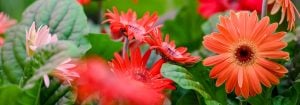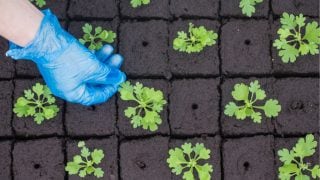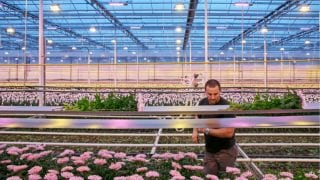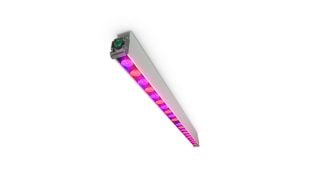The results from these types of research trials have made it easier for growers to apply LEDs in their own greenhouses. In August 2016, I participated in a project to support a European gerbera grower supplement part of their existing HPS lighting installation with LED grow lights. Together with the grower, I supported setting out a registration plan to compare their production results with HPS to their production results with the HPS and LED system. This would give us and the grower feedback from a commercial application as well as insight into aspects that might require further optimisation.
In the first winter of 2016, the company’s production was already in line with the expected increase, thanks to the higher light levels achieved by applying LED lighting. The quality of the crops was also excellent. After the winter, the grower felt that it would be possible to further increase the yield with the hybrid lighting system by raising the temperature in the greenhouse, and so also the crop temperature. In the second year, the growth time was monitored and the daily temperature in the greenhouse with hybrid lighting was raised. Based on the data, the same growth time was achieved for the HPS standalone system and the hybrid HPS and LED system. Production went more smoothly and the quality remained consistently high. There was also no sign of extra Botrytis in the hybrid greenhouse.






